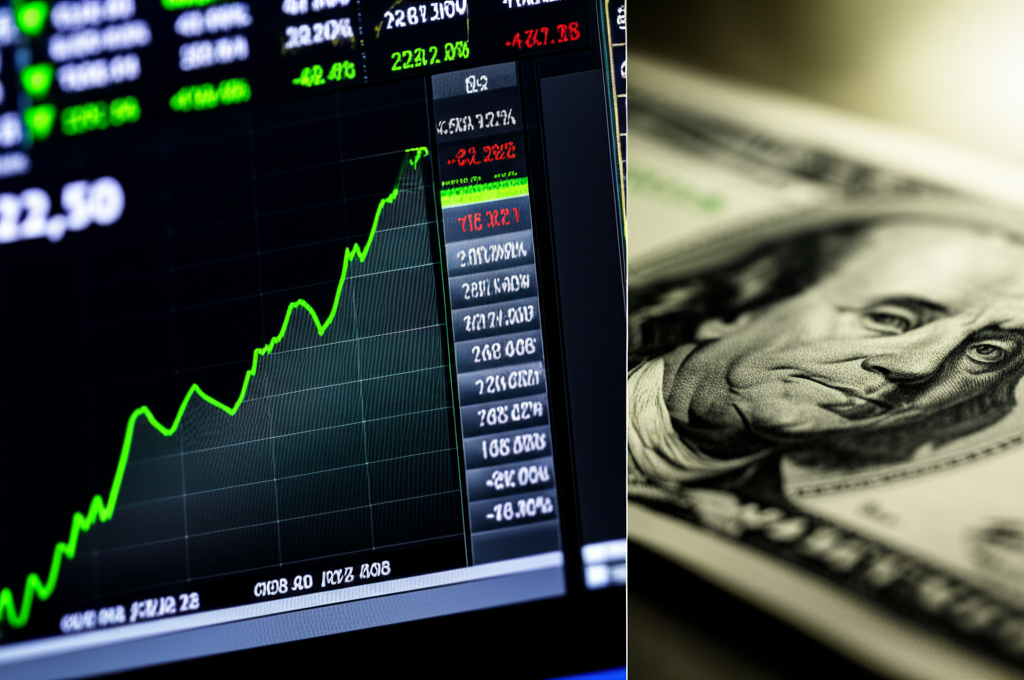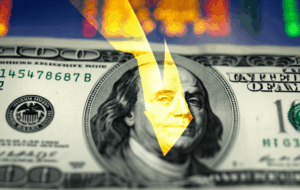Core CPI Miss Sparks Market Euphoria: Nasdaq Breaks 22,000, US Dollar Slides
A surprising “miss” in the latest Core Consumer Price Index (CPI) report sent a wave of relief, bordering on euphoria, through financial markets today, propelling the tech-heavy Nasdaq Composite past the significant 22,000-point threshold and sending the U.S. dollar tumbling against its major peers. The data, which showed inflation cooling more than economists had anticipated, immediately recalibrated investor expectations regarding the Federal Reserve’s monetary policy path, igniting hopes for earlier and more aggressive interest rate cuts.
The core CPI, a critical inflation gauge that strips out volatile food and energy components to provide a clearer picture of underlying price pressures, registered a lower-than-expected monthly and annual increase. This “miss” was music to the ears of investors, who have been fixated on inflation trends and their implications for central bank policy. For months, the market has grappled with the uncertainty of when the Federal Reserve might begin to ease its tight monetary stance, particularly as previous inflation readings proved stubbornly persistent. Today’s data offered a tangible sign that the disinflationary trend might be reasserting itself more forcefully than previously thought, paving the way for the Fed to potentially pivot from its hawkish stance sooner rather than later.
The immediate beneficiary of this shift in sentiment was the equity market, particularly growth-oriented sectors. The Nasdaq Composite, home to many of the world’s largest technology and innovation companies, surged dramatically, breaching the 22,000 mark for the first time in its history. Technology stocks are particularly sensitive to interest rate expectations; lower rates reduce borrowing costs for companies that often rely on debt for expansion and make future earnings streams more valuable in present terms, thus boosting their valuations. The prospect of cheaper capital and an improved economic outlook, spurred by potentially lower rates, unleashed a buying frenzy across the tech landscape. Companies that had seen their valuations compressed by a period of higher interest rates are now enjoying renewed investor confidence, with many blue-chip tech names leading the charge. This rally underscores the market’s profound sensitivity to inflation data and its direct link to the cost of capital, which fundamentally impacts business investment and profitability.
Conversely, the U.S. dollar experienced a sharp decline following the inflation data release. The greenback’s value is closely tied to interest rate differentials and expectations. When the prospect of lower interest rates in the U.S. becomes more pronounced, the relative attractiveness of dollar-denominated assets, such as Treasury bonds, diminishes compared to assets in other countries where interest rates might be stable or even rising. This reduced demand for the dollar translates into its weakening against other major currencies like the Euro and the Japanese Yen. For international investors, a lower U.S. interest rate environment means a reduced yield on their dollar investments, prompting them to seek higher returns elsewhere. This capital outflow puts downward pressure on the dollar’s exchange rate, a typical reaction to expectations of monetary easing.
Today’s market reaction is a stark reminder of the intricate dance between economic data, central bank policy, and investor psychology. While a single data point doesn’t dictate long-term trends, a significant “miss” in a closely watched metric like core CPI can dramatically shift perceptions and trigger powerful market movements. The “euphoria” seen today reflects the collective relief that the path to lower interest rates may be clearing, offering a potential tailwind for corporate earnings and economic growth. However, market participants will now eagerly await further economic indicators and, crucially, the Federal Reserve’s next policy statement and press conference for clearer signals on the future trajectory of interest rates. The market may be celebrating today, but its eyes remain firmly fixed on Washington D.C. and the next round of economic revelations.





